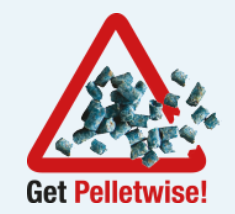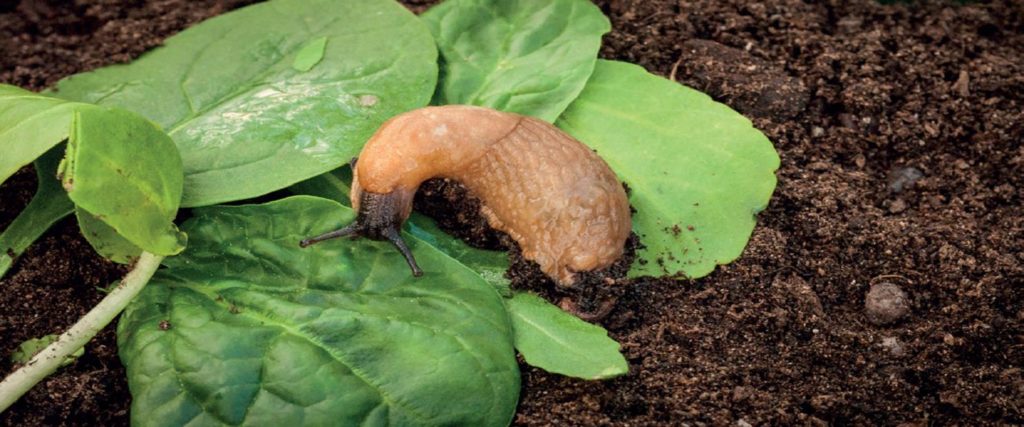Manage Slugs to Minimise Crop Damage
3 October 2019Slug trapping can be used now to assess the risk from slugs in a particular field.
To get the best from slug trapping the bait placed under the trap needs to grab the slugs’ interest and to keep them there. The best bait is a dry food bait such as the breakfast cereal ‘Alpen’ or similar, or chicken feed (layers mash). Do not use slug pellets as bait. A tablespoon of the bait should be placed under the trap, which can be a slate, fertiliser bag, slug mat, an upturned flower pot base, wooden board or something similar. Timing of trapping is crucial – place traps after there has been some rain, and the soil surface is moist. Traps should be checked in the morning before the day warms up too much, 1-2 days after being placed in the field. Consider using several traps per field so that you can determine whether some areas are more ‘sluggy’ than others, and trap regularly. If slug numbers exceed 5 per trap, especially if conditions have been suitable for slugs to be feeding on the soil surface (damp soil and humid nights) then the following winter wheat crop is likely to be at risk from slug damage. Only one slug per trap is enough to put winter oilseed rape at risk.
One approach to reducing the risk of slug damage is to provide a fine, firm seedbed for this autumns’ crop. Soil cultivation can reduce the risk of slug damage, as can deeper sowing of the seed (3-4 cm).
With the loss of the neonicotinoid cereal seed treatments, protection from seed hollowing by slugs by this method is no longer available. Consequently, an application of slug pellets may be needed to protect the germinating seed as well as the shoots (up to GS12).
In oilseed rape, the germinating crop needs to be protected from slug damage up until the 4-leaf stage.
Generally, a pre-emergence application of pellets with a follow-up post-emergence, if the damage is seen, tends to do the job in both wheat and winter oilseed rape. However further treatments may be necessary if the crop is slow to emerge or slug pressure is severe.
The result of a judicial review into DEFRA’S decision process for the revocation of metaldehyde has led to metaldehyde now being ‘back on the shelf’ for the time being and available to purchase. DEFRA may well revisit the decision on revoking metaldehyde, so only purchase enough stock for use in this current season.
Ferric phosphate should be considered as a partner with metaldehyde, or a straight alternative in a slug management programme.
If using metaldehyde growers should follow the Metaldehyde Stewardship Group (MSG) stewardship guidelines for the use of metaldehyde molluscicide products pellets this autumn.
In particular, no metaldehyde pellets should be allowed to fall within a minimum of 10 metres of any field boundary or watercourse. This measure will protect birds and small mammals, and provide additional protection to water.
• No pellets to be allowed to fall within a minimum of 10 metres of any field boundary or watercourse
• Use minimum active per hectare to avoid drainage and run-off losses
• Maximum application rate 210g metaldehyde a.s/ha. For additional protection of water, suppliers/BASIS advisors may recommend rates reduced to 160g a.s/ha or less
• Maximum total dose from 1st August to 31st December: 210g metaldehyde a.s/ha. For additional protection of water, suppliers/BASIS advisers may recommend rates reduced to 160g a.s/ha or less
• Maximum total dose rate: 700g metaldehyde a.s/ha/calendar year
• Do not apply when heavy rain is forecast
• If drains are flowing do not apply metaldehyde based slug pellets
More information on the enhanced stewardship can be found at www.getpelletwise.co.uk
Note that ferric phosphate slug pellets do not have any restrictions on use and tend to be just as effective as metaldehyde slug pellets, and can be applied up to the field boundary.
- FAS Practical Guide to Managing Slugs & Leatherjackets
- This document looks at the problems of slugs & leatherjackets and how to control them.
- Topics: Climate Change and Crops and Soils
Sign up to the FAS newsletter
Receive updates on news, events and publications from Scotland’s Farm Advisory Service


